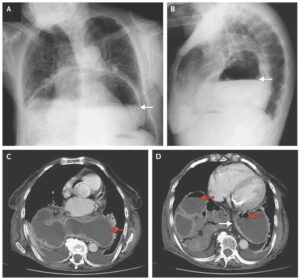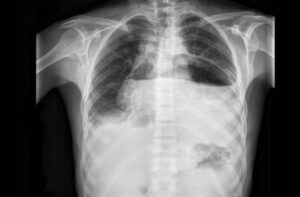This article is an answer to the Case – 2-year history of a nonhealing ulceration on the left heel
A nonhealing ulcer in the lower extremity should raise concern for malignancy, peripheral arterial disease, diabetic neuropathy, autoimmune disease, and venous disease. The differential diagnosis is broad and the diagnostic approach depends on the history and exam findings.
Venous disease is the most common cause of lower-extremity ulcers. Irregularity of shape and color, change in size, and symptoms of inflammation should prompt suspicion for malignancy, as is the case here. While infectious cause is possible, it is less common.
The physical examination revealed an ulcerated black plaque measuring 5.5 cm by 6.5 cm. An excisional biopsy showed an acral lentiginous melanoma with a Breslow depth of 2.0 mm.
The patient underwent a wide local excision with 2-cm margins. A sentinel-lymph-node biopsy of the left inguinal nodes was negative. After 2 years of follow-up, there was no evidence of recurrence.
Acral lentiginous melanoma is an uncommon variant of melanoma that typically occurs on the palms and soles. It is the most common histologic subtype of melanoma among black patients.
Despite the higher incidence of melanoma among non-Hispanic white patients, black patients with melanoma (regardless of histologic subtype) are more likely to present with advanced-stage disease and are more likely to have lower survival rates than their white counterparts. The reasons for advanced disease at presentation are not entirely clear but are thought to be due in part to delays in diagnosis.


